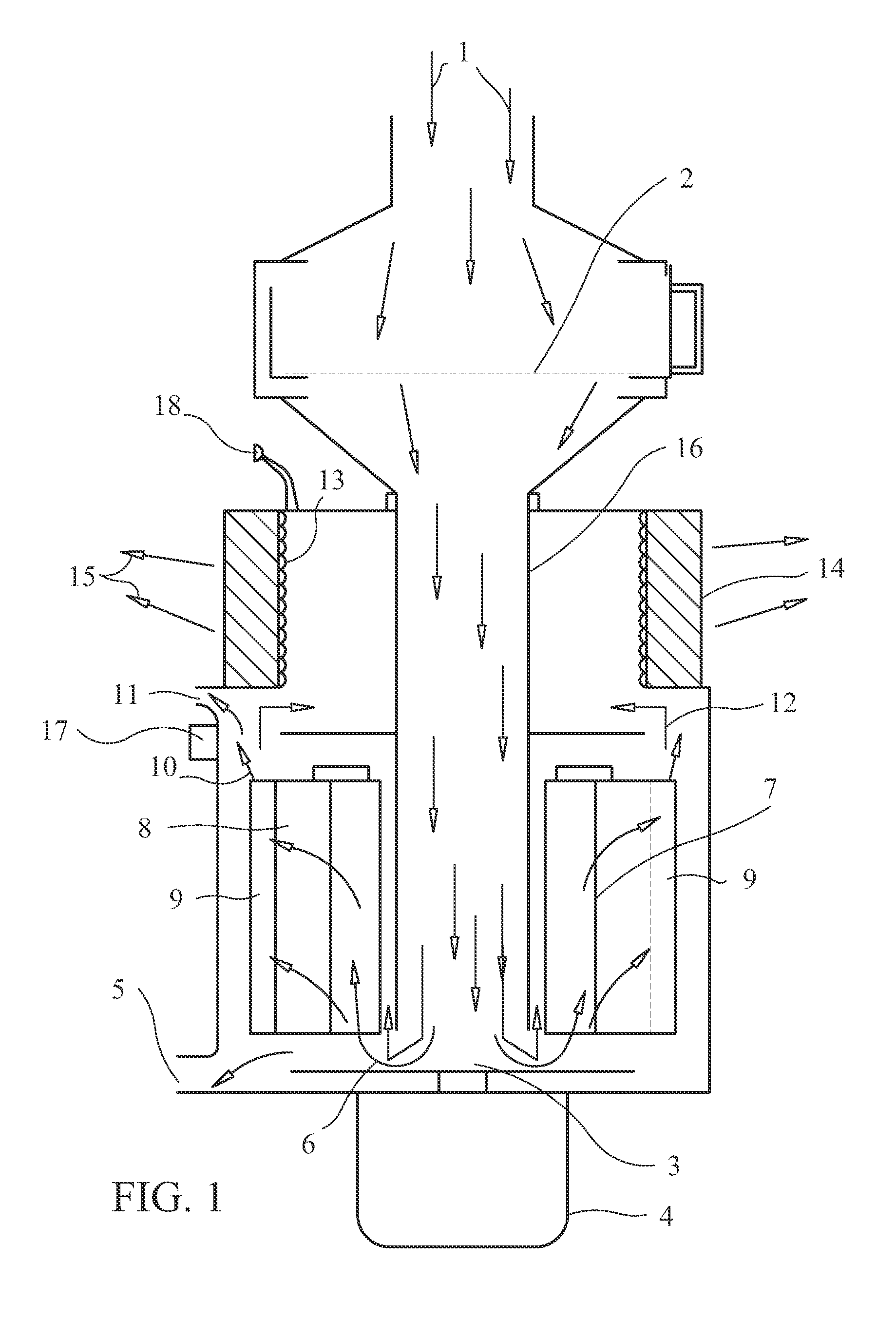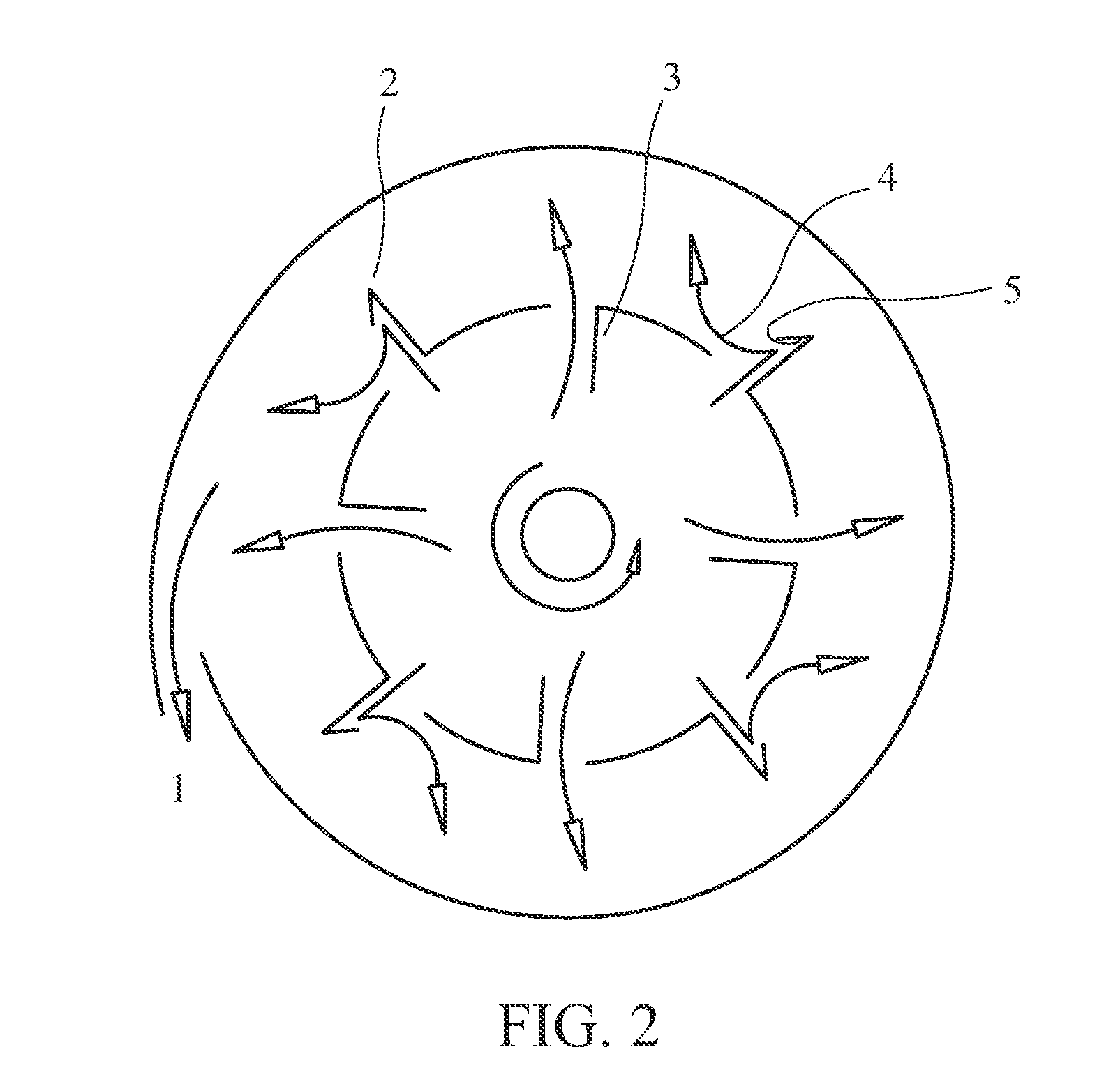Vertical Filtering and Separating Suction Machine of Chips, Steam and Smoke by Change of Air Direction, for Machining Center, Lathe Machine or Other Machines Generating Steam from Oil or Coolant
a filtering machine and vertical filtering technology, applied in the direction of filter regeneration, gas current separation, maintenance and safety accessories, etc., can solve the problems of high degree of toxicity for the human body, damage to the electrical system, pollution,
- Summary
- Abstract
- Description
- Claims
- Application Information
AI Technical Summary
Benefits of technology
Problems solved by technology
Method used
Image
Examples
Embodiment Construction
[0040]The vertical filtering and separating suction machine of chips, steam and smoke by change of air direction, for machining center, lathe machine or other machines generating steam from oil or coolant that is disclosed in this presentation, consists of the following parts, pieces or sections:
[0041]A pipe, preferably made of rigid plastic which serves as an air collector and which is connected to the sector of the machining center (or another cutting machine) where mist to be sucked is generated, about 110 mm. in diameter, and whose length and route will be modified according to the features of workplace, the place where the suction machine will be located and other variables.
[0042]A parallelepiped-shaped cabin, about 25 cm.×26 cm×11 cm. high, preferably made of galvanized sheet since it is lightweight, resistant and stainless, crossed transversely by a removable drawer of about 22 cm.×25 cm.×7 cm., whose bottom is composed of a thick metal mesh n°6 (i.e. with6 wires per inch) of...
PUM
| Property | Measurement | Unit |
|---|---|---|
| Angle | aaaaa | aaaaa |
| Angle | aaaaa | aaaaa |
| Current | aaaaa | aaaaa |
Abstract
Description
Claims
Application Information
 Login to View More
Login to View More - R&D
- Intellectual Property
- Life Sciences
- Materials
- Tech Scout
- Unparalleled Data Quality
- Higher Quality Content
- 60% Fewer Hallucinations
Browse by: Latest US Patents, China's latest patents, Technical Efficacy Thesaurus, Application Domain, Technology Topic, Popular Technical Reports.
© 2025 PatSnap. All rights reserved.Legal|Privacy policy|Modern Slavery Act Transparency Statement|Sitemap|About US| Contact US: help@patsnap.com



